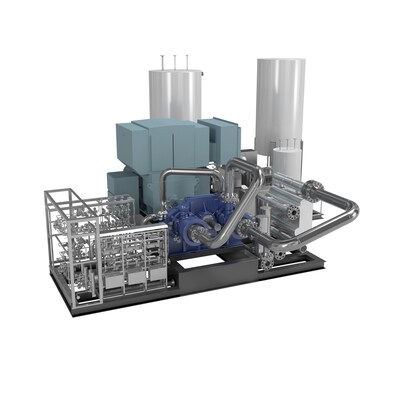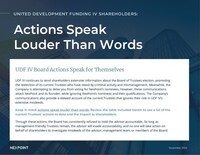Where Will Broadcom Be in 3 Years?
With Broadcom‘s (NASDAQ: AVGO) upcoming earnings in focus for many tech investors, I wanted to take a longer view and examine where the stock might be in three years — not where it will trade in the next three weeks.
As such, let’s take a closer look at the technology company, what it does exactly, and where its stock could be headed.
An acquisition machine
Broadcom has a long history of acquisitions. In fact, if you have ever wondered why a company called Broadcom has the ticker symbol “AVGO,” it stems from Avago’s acquisition of Broadcom back in 2016. Avago decided to keep its ticker symbol, but it took the Broadcom name.
At the time, the deal brought together the leader in analog semiconductor devices (Avago) and the leader in semiconductor solutions for wired and wireless communications (Broadcom). But even before that big deal, Avago, which was originally a part of Hewlett-Packard, had made a number of sizable acquisitions, including LSI as well as Infineon’s Polymer Optical Fiber business. It later bought storage networking company Brocade in 2017.
Following its deal for Brocade, Broadcom shifted gears and began acquiring companies in the software space, including CA Technologies and cybersecurity company Symantec. More recently, the company made another huge deal, buying VMware for about $86.3 billion in cash and stock.
These various deals have gotten Broadcom into a variety of different businesses. On the semiconductor solutions side, this includes such offerings as ethernet and switches, fiber optics, broadband access, set-top boxes, RF semiconductor devices, and storage. Meanwhile, on the software solutions side of its business, it has solutions for such things as database management, cybersecurity, SAN management, cloud computing, virtualization, and even payment authentication.
All in all, Broadcom has 26 divisions encompassing both semiconductor and software infrastructure.
AI opportunity
Networking is Broadcom’s largest business, and on that front, the company has been benefiting from the current artificial intelligence (AI) buildout. While Nvidia has been the biggest beneficiary of this buildout, its graphic processing units (GPUs) are not the only component that goes into a GPU cluster.
Broadcom also has critical components, including switches and NICs (network interface cards). Switches allow two or more devices to communicate with each other, while NICs are needed to connect to a network.
As clusters become larger, Broadcom believes that the networking piece of the cluster will become increasingly important. The reason is that it will cause a distributed compute challenge that needs to be solved.
In addition to networking, Broadcom also builds custom chips (application-specific integrated circuits, or ASICs) for customers. For example, it is behind Alphabet’s tensor processing unit for AI workloads. Broadcom sees this as a big opportunity as companies will want customized silicon to run specific AI workloads more efficiently than can be run with general GPUs.
Analysts at Morgan Stanley are very bullish on this opportunity, estimating that Broadcom’s ASIC revenue will be from $3 billion in fiscal year 2023 to $10 billion in fiscal year 2025. This bullishness stems from the company adding two new customers in addition to Alphabet.
Overall, the company has seen strong AI revenue growth, with Q2 (ended May 5) AI revenue surging 280% year over year to $3.1 billion.
Other businesses are mixed
While Broadcom’s AI business has been doing great, its other businesses have struggled. The biggest reason behind this stems from cyclical weakness in the enterprises and telco spaces. Broadcom believes that both service storage revenue and broadband revenue are close to bottoming.
That said, this is why its overall revenue, excluding VMware, only rose 12% in fiscal Q2, despite the huge surge in AI revenue.
Meanwhile, with VMware, the company is currently in the process of transitioning all of its software products to a subscription service. It said that about 3,000 of its largest 10,000 customers have already signed up to build a self-service virtual private cloud on-premise. Broadcom has a solid history of integrating acquisitions, and the transition of VMware to a subscription service looks like a good long-term move. It also recently just pushed out some tools for its software-defined edge products to help edge computing customers deploy AI tools.
Where the stock could be headed in three years
AI will be Broadcom’s biggest opportunity over the next few years. This includes its networking solutions as clusters grow in size and complexity, as well as with customized chips. It then needs to see a rebound in its more commoditized businesses. Meanwhile, management has forecast that VMware will grow its revenue by double digits over the next three years.
Those growth opportunities are why analysts are currently projecting the company’s earnings per share to rise from a projected $4.75 this fiscal year (ending in October) to $8.59 for fiscal 2027, a little over three years out.
Broadcom has traded in a pretty wide price-to-earnings (P/E) range over the past five years, from around 25 to 75 times. At the middle of that range, though, you are looking at around a $430 stock if it can grow its earnings as expected.
Should you invest $1,000 in Broadcom right now?
Before you buy stock in Broadcom, consider this:
The Motley Fool Stock Advisor analyst team just identified what they believe are the 10 best stocks for investors to buy now… and Broadcom wasn’t one of them. The 10 stocks that made the cut could produce monster returns in the coming years.
Consider when Nvidia made this list on April 15, 2005… if you invested $1,000 at the time of our recommendation, you’d have $731,449!*
Stock Advisor provides investors with an easy-to-follow blueprint for success, including guidance on building a portfolio, regular updates from analysts, and two new stock picks each month. The Stock Advisor service has more than quadrupled the return of S&P 500 since 2002*.
*Stock Advisor returns as of August 26, 2024
Suzanne Frey, an executive at Alphabet, is a member of The Motley Fool’s board of directors. Geoffrey Seiler has positions in Alphabet. The Motley Fool has positions in and recommends Alphabet and Nvidia. The Motley Fool recommends Broadcom. The Motley Fool has a disclosure policy.
Where Will Broadcom Be in 3 Years? was originally published by The Motley Fool





Leave a Reply